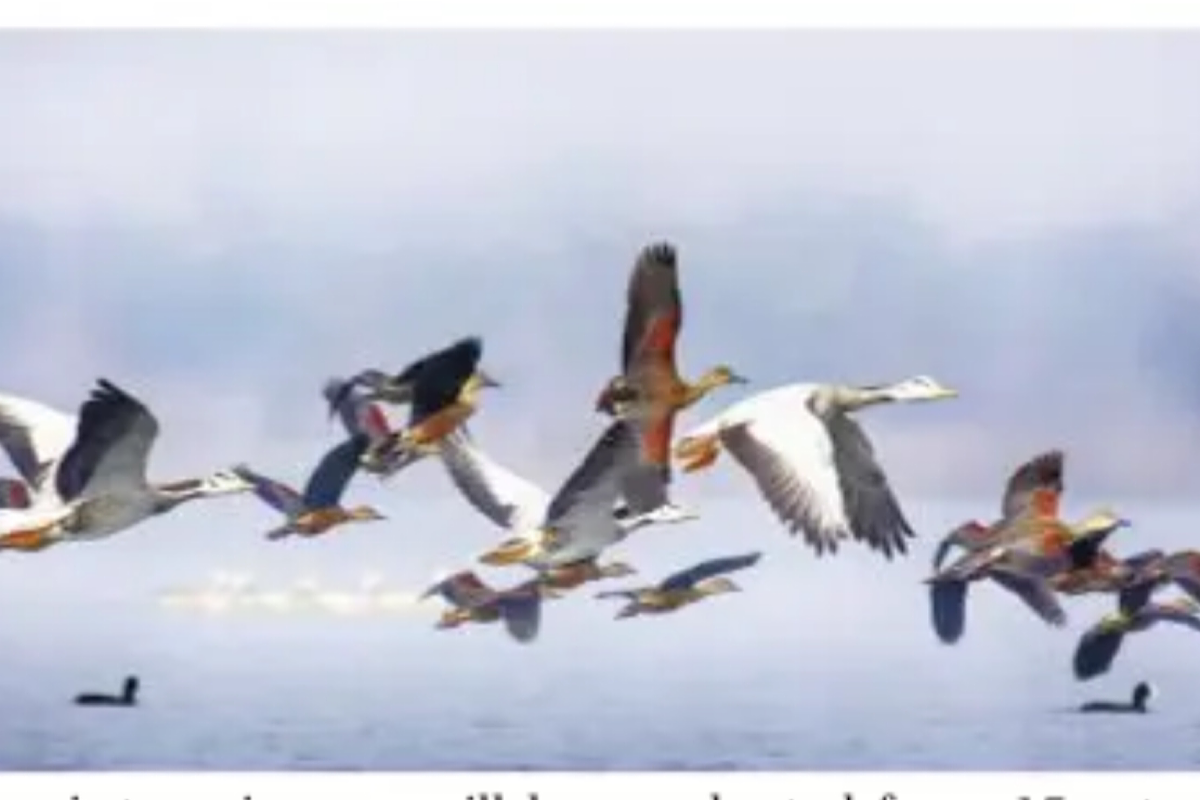The one-month-long census work of migratory bird arrivals begins in West Burdwan district from Saturday, even as the winged visitors face a lot of challenges like climate change, loss of habitat and dwindling green patches. Every year approximately two to three lakh migratory birds arrive in the wetlands of West Burdwan district in October and go back in the first week of April. There are four categories of winter migratory birds – Waders (smaller birds which reside in the banks near the wetlands), ducks, raptors, fly catchers etc.
Arrival of each category varies: the waders come first, while the ducks arrive last. Every year winter migratory birds arrive in flocks in West Burdwan district’s Damodar riverbed, the wetlands in ISP, Burnpur, Damodar Barrage in Durgapur, Gunjan Ecological Park, Colonel Singh Park and Boat Club in Chittaranjan Railway township, Durgapur Barrage in Durgapur etc . The winter migratory bird count in these water bodies will be conducted from 15 December to 15 January.
The state forest department will be working in collaboration with the experts of two voluntary organisations ~ Wild Tuskers in Asansol and Wings in Durgapur. Volunteers of Wild Tuskers have started work from Damodar River Bed in Burnpur from Saturday. Besides, another voluntary organisation based in Kolkata, Bird Watcher Society will conduct a census of water fowl which includes ducks and water fowls.
Talking to The Statesman, Saptarshi Mukherjee, secretary of Wild Tuskers of Asansol said that avian species start arriving from October middle instead of late September due to climate changes, the winter is getting delayed every year that is why the number of feathered guests are dwindling every year .
“There has been several challenges before the forest department officials and bird lovers as the migratory birds are getting disturbed due to the winter picnic season on the Damodar River beds using loudspeakers, rampant sand mining in the river banks, felling of trees due to rapid industrialisation and urbanisation etc. Awareness drives are regularly undertaken both by the forest department and the bird lovers,”he added. In the water body inside grounds of the steel plant of ISP in Burnpur, roughly two hundred and fifty numbers of crested pochard ( Netta Rufina) and Little Cormorant (Microcarbo ninger) are seen these days, according to an ISP official. In previous years the number was more than 500.
These birds arrive from faraway places like Iran. Last winter, the winter migrants were abundant. About 40 species of Ruddy Shelduck (coming from Tibet) were spotted. The numbers of Wagtails, taiga flycatcher, sandpipers, little ringed plovers, and gulls were satisfactory. “We also found gadwill and red crested pochards (a duck species) as well. This year, there has been a slight decline in ducks. However the migration is still going on. Ruddy Shelducks have arrived but in fewer numbers. The reason is probably the sharp decline in habitat and encroachments,”he said.
Some of the bird species already spotted this year are Pallas’s Gull in Damodar Barrage in Durgapur, Ruddy Shelduck, Great Cormorant, Bar-headed Goose and Lesser Whistling Ducks, Tufted Duck, Pacific Golden Plover, Red Crested Pochard, Citrine Wagtail, Osprey, Pied Bushchat, Eastern Marsh Harrier, Sulphur- Bellied Warbler etc. Change of crop pattern, use of pesticides and loss of habitat have led to fall by as much as 80 per cent of the migratory bird arrivals to the wetlands of the country, experts opine.
Scarcity of food and extreme cold are the reasons behind the annual ‘Great Escape” of the millions and millions of migratory birds from the chilly northern winter to a warmer country like India.












